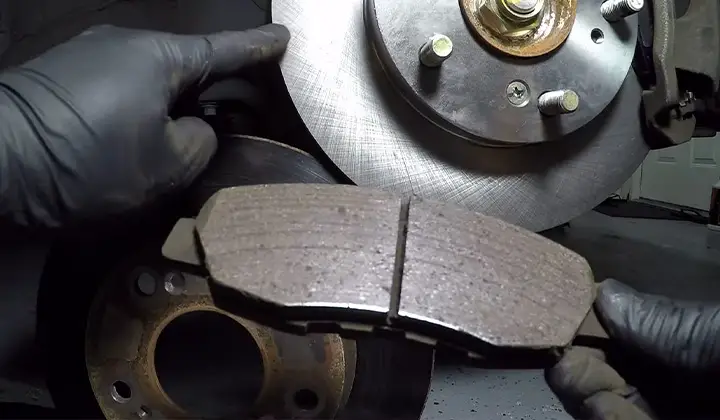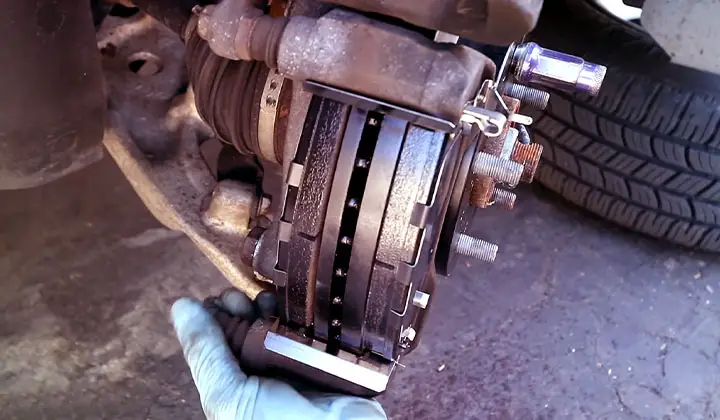This is certainly a bad idea of using used brake pads on your vehicle. You may not able to detect any problems immediately but used brake pads will snatch out other brake parts’ life span. Moreover, the new parts will not be able to escape from it.
Contents
Only used brake pads
There is a possibility that you might pair your new brake parts along with your old parts like used brake pads. This will impact negatively on your car.
Old brake pads on new rotors
If your brake pads are old and you want to pair them up with new sets of rotors then you will get matching uneven wear. Using them will cause weak braking for a while at a minimum.

Present brake parts
Used brake pads will cause harm to the brake system and to your car. However, the present brake rotors and calipers may get damaged along with it.
Damaging other connected parts
Brake pads are linked with other connected systems of moving parts like brake rotors and calipers. The used, damaged brake pads can trickle down into other elements.
Brake rotor
When the brake is hit, the brake pads squeeze the rotor to stop the car. However, when the pads are excessively worn, which exposes metal on the pads grinds against the rotors. This produces a grinding noise and likely damages the rotors every time when you hit the brake.
Also, squeezing the rotor, resulting in the heat generated from the metal-on-metal grinding. This means used brake pads can crack the rotor.
Calipers
The damaged parts will start damaging other linked parts like calipers. The calipers will not be able to function properly without fine rotors and pads. Thus, worn-out brake pads will create more problems for the brake system.
A slow response time
You need a properly functioning brake system to slow and stop the vehicle. But if you have worn out brake pads, cracked rotor, and damaged calipers, you may face difficulty stopping the vehicle.
However, if you are driving with worn-out brakes that are already glazed, then it may feel like you have to push the brake pedal down harder to stop. There are side effects for using glazed brakes like longer stopping distances, brake slipping, and pulling the car to one side when you brake.
If the worn brake pads do not engage the rotors as designed then the latter will appear. The pads will not be able to grip both sides uniformly. This will cause drifting or slipping when you brake.
Vibration
There is a chance that the damaged parts may cost vibration. They can send vibrations throughout your car. The early signs are like the car may shake or the steering wheel vibrates when you brake.
Wear down your tires
There will be a time when you will find yourself slamming on the brake pedal more often to slow or stop the car. This happens because of worn-out brakes. After using these brakes for a while, the tires started to get damage.
All these hard brakings can wear your tires down quicker. Also causing them to become unbalanced and lead to uneven tire wear.
Other parts
There are other parts in the brake system like pedals, brake fluid systems all are linked together. If one shows any kind of damages then other parts starting to show irregularity. Then you might need to check the whole car because of using old, used, worn brake pads.
Signs after damaging other brake parts
There will be squealing, screeching, or whining noise when the brakes are engaged. However, if the sound disappears after the first few times using the brakes then you are still okay to drive.
But if you happen to hear a deep, low noise that sounds like metal grinding or a rumbling growl, that can be a sign that not only are your used brake pads are more worn away, but also your brake shoes’ backing plates are making contact with the discs or drums. So, in the end, this metal-on-metal contact can very quickly cause even further damage to your braking system.
Replace the brake pads and rotors
Not only you will buy new rotors but also the pads at the same time. Because when you have net sets of rotors, the used brake pads will only make contact with the brake rotors in places where the pads have high points. In the end, the used areas of the pads cannot reach the rotors.
As a result, you will be prevented to have access to your car’s full stopping power. Additionally, if you replace only the brake rotors and not the pads, and your brakes keep making noise, it may be due to the uneven wear between the pads and the brakes.

FAQ
1. Can I drive with worn brake pads?
Ans. Yes, you can but only if you are willing to take the risk of further problems.
2. How much does it cost to get brake pads replaced?
Ans. The average brake pad replacement costs around $150 per axle. However, these costs can rise to around $300 per axle depending on your vehicle’s brake pad materials.
3. What should I do with old brake pads?
Ans. You can take the brake pads to the closest waste management facility and place them in metal recycling containers. But if you think the brake pad may contain asbestos, then keep the brake pad until your town’s hazardous pickup day.
4. Should I replace all 4 brake pads at once?
Ans. Well, first, you absolutely should replace both the front and both the rear brake pads at the same time. Unless something’s really wrong, one should be wearing out at about the same rate as the other.
Bottom line
You can use used brake pads on your car while managing your money to buy new sets. However, it is not mandatory that you have to replace them. Be aware that if you reuse the old pads, they may take some time to wear to the surface of the new discs for the first 100 miles or so.
